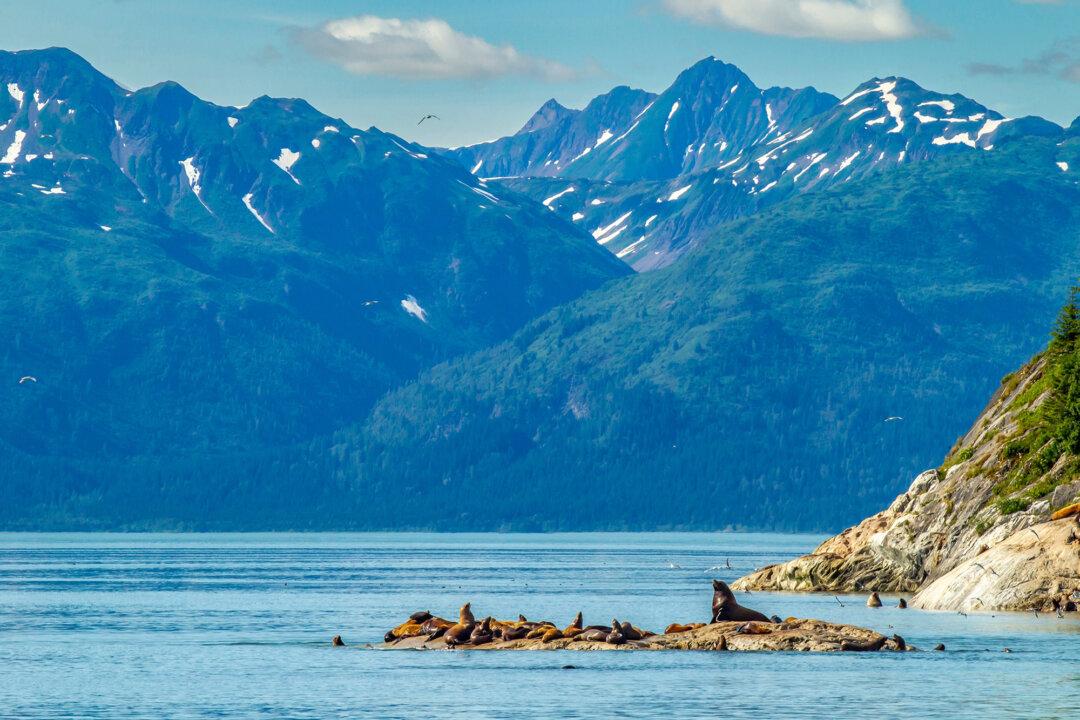The sheer wall of ice is 300 yards away. At 250 feet tall, it’s a hazy blue-white that mirrors the infinite midsummer sky overhead. Hundreds of travelers are gathered on the decks of a massive ship just to watch the face of Johns Hopkins Glacier.
Expectation is as crisp as the 50-degree-Fahrenheit air. Natural history interpreters explain that the ice just ahead fell as snow 200 years ago in the 15,000-foot heights of the Fairweather Range to the west. It flowed 12 miles downhill to reach saltwater. This means that Johns Hopkins is a tidewater glacier. It’s the object of intense anticipation for visitors to Glacier Bay National Park.





